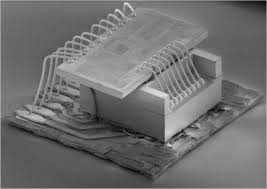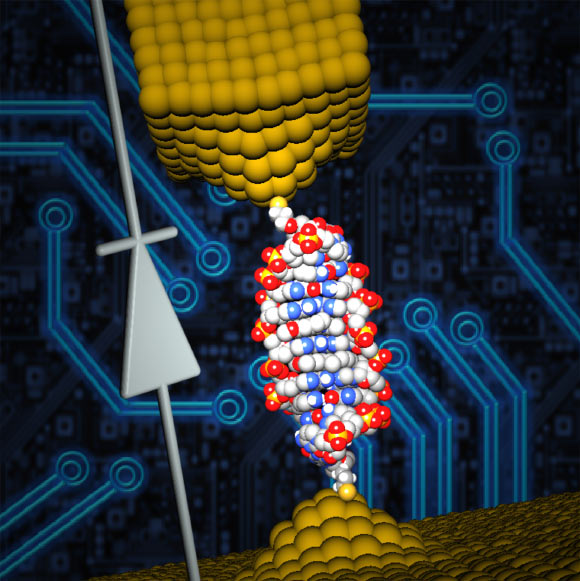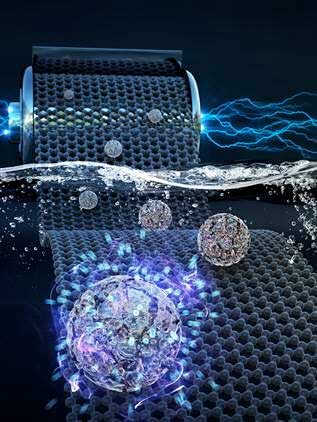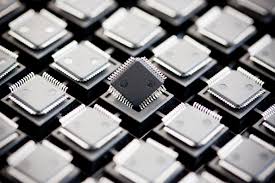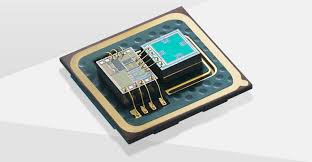Department of systems (nano and microelectric and mechanical MEMS )
The method and principles of the construction and placement of the MEMS nano- electric and mechanical system
Researcher and author: Dr. ( Afshin Rashid)
Note: MEMS are integrated in mobile microstructures (with electromechanical components), sensors, actuators, radiant energy devices and microelectronics. These MEMS can be made for use in various microfabrication technologies such as micromachines.
Basic technology in making MEMS, CMOS and biCOMS (for making ICs) and micromachines (for producing movement and radiation and energy radiation to micron-scale devices and structures ). One of the main goals is to combine microelectronics with devices and structures of mechanical electromechanical micromachines to produce integrated MEMS with high efficiency . To ensure high performance, workability, reliability and manufacturability, CMOS-based bulk fabrication processes are well developed and need to be refined and enhanced.
Bulk body micromachining in MEMS components
Micromachining of the surface and body (BULK), as well as high-aspect ratio (LIGA-like) or (high-aspect ratio) techniques are the most developed manufacturing methods. Silicon is the material under the first layer that is used in the microelectronics industry. A crystal mold ( a solid cylinder of 300 mm diameter and 100 mm length) is crystallized from silicon with a very high purity percentage and is cut to the desired thickness, and then it is polished by means of mechanical and chemical polishing technologies . The properties of electromagnetic and mechanical tablets are based on the direction and place of crystallization of the crystal and its expected impurities. Depending on the silicon substrate, CMOS and biCMOS processes They are used for the production of ICs, and micromachining (micromachining) surface and body (BULK), (in addition to high-aspect ratio techniques , (LIGA-like and LIGA) or high-aspect ratio) are the most developed manufacturing methods. Silicon is the material under the first layer that is used in the microelectronics industry. A crystal mold ( a solid cylinder of 300 mm diameter and 100 mm length) is crystallized from silicon with a very high purity percentage and is cut to the desired thickness, and then it is polished by means of mechanical and chemical polishing technologies . The properties of electromagnetic and mechanical tablets are based on the direction and place of crystallization of the crystal and its expected impurities. Depending on the following Silicon layer, CMOS and biCMOS processes are used to produce ICs and the processes are classified as: well-n (n), well-p (well-p), or well-twin. The main steps are : Diffusion, oxidation, polysilicon gate arrangement, optical photolithography, gate formations, masking, etching, metallization, wire bonding , etc. In the following, we list the main and basic processes and stages of MEMS manufacturing.
Classified processes such as:
N well-n source, (p source) (well-p) (or well-twin source) (the main steps are: diffusion, (oxidation)
oxidation, polysilicon gate arrangement, photolithography, gate formations
Masking, etching, metallization, wire bonding, etc. In the following, we list the major and basic processes and stages of MEMS manufacturing.
Stage 1 (Crystallization of silicon dioxide (grow silicon dioxide):
(Silicon dioxide is crystallized by a thermal method on a silicon base. For example, crystallization can be done in a space full of water vapor at a temperature of 1000 degrees Celsius and for one hour. Silicon surfaces with a layer with a diameter of 5 0 to 1 micron are covered by silicon dioxide (the thermal oxide thickness is limited to a few microns as a result of the diffusion of water vapor along the silicon oxide). Silicon dioxide can be deposited without changing the surface of the layer, but this process is so slow. which minimizes the pressure of the thin membrane.Silicon nitride may also be deposited and its thickness is limited to 4 to 5 micrometers.
Step 2: (photoresistor)
(photoresist): a light-sensitive material (photoresist) is used on the surface of silicon dioxide. This process can be done by rotating the photoresist coating suspended in a solvent. The result after rotating and removing the solvent is a photoresist with a thickness of 0.2 to 2 microns. The photoresist is completely cooked and soft to remove the solvents from it .
Step 3 (in exposing the photolithography and its development : (photolithography Exposure, and Development)
The photoresist is exposed to ultraviolet light like a light engraving mask (optical mask). This optical mask blocks the light path and defines a pattern to ensure optimal surface mapping . Optical masks are usually made using fused silica and optical transparency that are subjected to effective wavelength, width and thermal expansion. A cloudy layer is placed on a glass or (quartz) surface as a sample. ( Usually a chrome layer with a thickness of hundreds of angstroms). An optical mask is produced based on the required shape of polysilicon shell . The mapping of the surface is determined by the mask. Photoresist is then created. In a positive photoresistor, light, It reduces the molecular weight of the optical resistance and selectively removes the material with the lowest molecular weight that causes the optical resistance .
Step 4 (Etch silicon dioxide :
Silicon dioxide is applied . The remaining photoresist is used as a hard mask that protects the silicon dioxide part. Photoresist is removed by wet etching ( hydrofluoric acid, sulfuric acid and hydrogen peroxide) or dry etching (using oxygen plasma). The result is a thin film of silicon dioxide on a silicon base.
Step 5 (Polysilicon Deposit:
(A thin film of polysilicon is deposited on silicon dioxide. For example, polysilicon can be deposited in an LPCVD system at 600 degrees Celsius in a confined space of silane (SiH4) . The deposition rate under normal conditions is 65 to 80 angstroms . per minute (Almin) which minimizes the internal pressure and prevents bending and folding . (The thin polysilicon curtain must be without pressure or have a tensile internal pressure). The thickness of the thin curtain is more than (4) ) is micron.
Conclusion in the method of manufacturing and reproduction of MEMS system
With the works done in the field of NEMS, MEMS today, the industry has moved more towards the science of micro and nano electronics. Therefore, research works in this field seem to be mandatory, the result of which is the achievement of the best science and technology of the century. Among the future works that should be done in this field is the optimal design of MEMS and obtaining its modified types for work in other sciences.
Researcher and author: Dr. ( Afshin Rashid)
Specialized doctorate in nano-microelectronics


